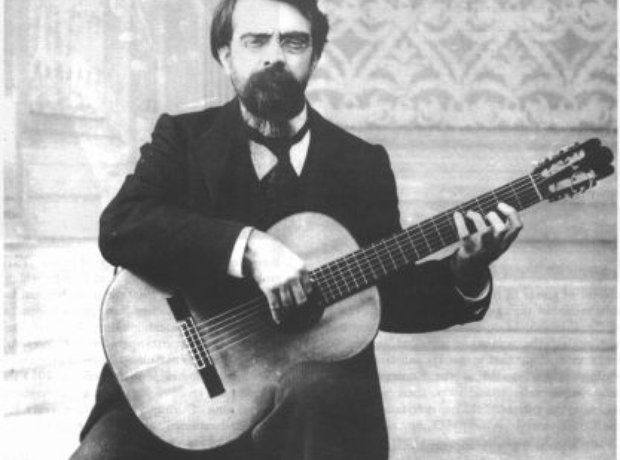Artists
Francisco Tárrega Biography
Francisco Tárrega is a person who is useful to have an idea about many people who are interested in guitar and especially classical guitar music.
Francisco Tárrega is a composer who has signed some cult pieces in the world classical guitar repertoire. With his understanding of harmony, he succeeded in influencing both his contemporaries and the guitarists who came after him.
If you’re ready, we can start taking a closer look at Francisco Tárrega’s musical life.
Francisco Tárrega y Eixea (November 21, 1852 — December 15, 1909)
Spanish composer, guitarist.
Francisco Tárrega comes from a family involved with music. He took his first guitar lesson when he was 8 years old. Tárrega’s father advised his son to learn to play the piano, as the piano was gaining more and more importance over the guitar during this period. Thus, Tárrega gained mastery in both instruments at a young age. In 1862, Tárrega became a student of the famous guitarist Julián Arcas.
The Effects of Antonio de Torres Guitar Playing Style on Francisco Tárrega
In 1869, Tárrega acquired a guitar from Spanish guitar master Antonio de Torres (1817–1892), which differed markedly from previous instruments. The biggest difference of this new generation guitar is its modern form and lengthened neck to 65 cm. The sound of this new model was high and the timbre was different. This guitar played a prominent role in Tárrega’s later guitar life.
In 1885, Tárrega moved to Barcelona with his wife, María Josefa Rizo, and son, Francisco. There he met the Spanish national composers Isaac Albéniz (1860–1909) and Enrique Granados (1867–1916). He befriended these composers and transcribed many of Albéniz’s works for the first time on the guitar.
Tárrega’s works and influence are a milestone in the development of the guitar technique. He is the most important guitarist and teacher of his time, and also the founder of the “New Spanish Guitar School”.
The most basic characteristic of this new trend is its powerful voice. The high timbres that Tárrega brought out of this new guitar, the long and full resonance of the sound, impressed many guitarists. This approach became the foundation of the Spanish guitarist of the time.
Tarrega’s Technical Understanding
With advancing age, Tárrega’s nails weakened. That’s why, as of 1902, he gave up the nail playing technique he had been using until then.
He started playing the strings only with the tip of his finger, that is, without touching the fingernails. Unfortunately, his work “Recuerdos de la Alhambra”, which was played from beginning to end with the tremolo technique, is probably no longer able to perform.
Drawing on the classical technique of Fernando Sor (1778-1839) and Mauro Giuliani (1781-1829), who created schools before him, Tárrega took the art of interpretation even further and improved the skill of his predecessors with his precise technique.
With his meticulous work, compositions and instructive works, Tárrega has established principles that are valid all over the world even today. Among them, the Apoyando stroke and the position of the fingers hitting the strings stand out. Placing the guitar on the left leg has also become the standard position since Tárrega.
The Influence of Francisco Tarrega’s Works
With these innovations, Tárrega has unprecedentedly expanded the possibilities of the guitar’s artistic expression. His students, notably Emilio Pujol (1886–1980), Miguel Llobet (1878–1938), and Daniel Fortea (1878–1953), developed Tárrega’s style in their own interpretations. They thus contributed to making Tárrega’s method the most common style in the world.
Tárrega expanded the classical guitar repertoire with numerous transcriptions. His works have been among the most successful and most played compositions of classical guitar concert programs until today.
Among his compositions are mainly etudes and dances. His interest in the piano was discovered by J.S. He was influenced by the works of Bach, Händel, Beethoven, Haydn, Mozart, Chopin, Schubert and Schumann. In musical circles, Tárrega is considered the “Schubert of the Guitar”.
